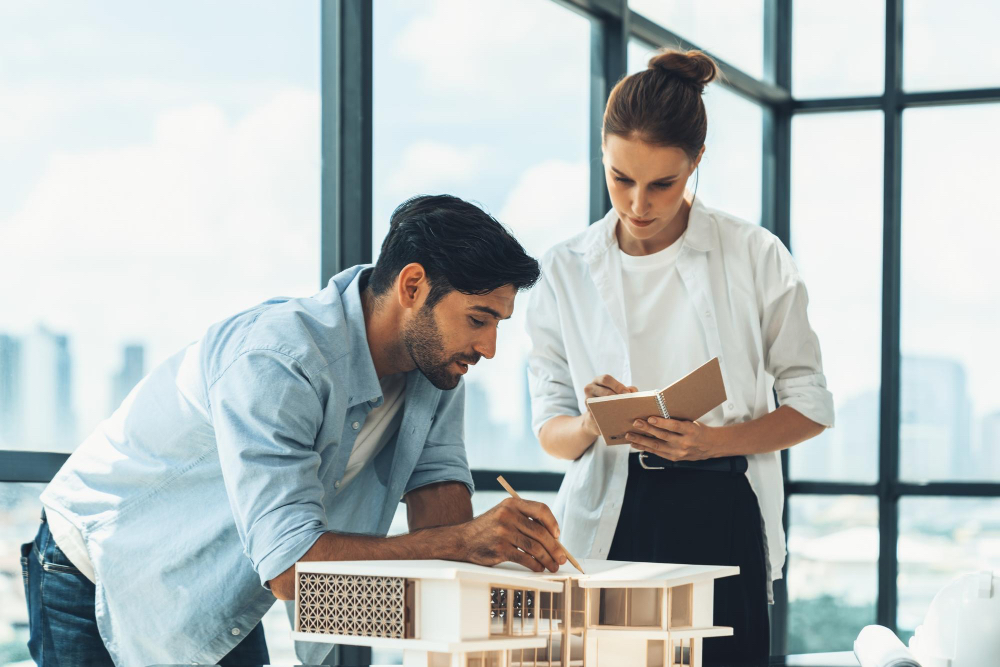Real estate has a significant impact on urban development that goes much beyond the simple construction of buildings. Real estate initiatives are expanding in breadth as a result of visionary leaders like Ravi Uppal, who are emphasizing how they may improve community well-being and public health. This strategy creates surroundings that support healthier lifestyles and promote community wellbeing by incorporating elements that promote health into the design of developments.

Post-Contents
The Connection Between Real Estate and Public Health
The surroundings in which individuals live, work, and play have a substantial impact on their health outcomes. Urban planning and real estate development, consequently, exert tremendous impact over public health. Developers have a critical role to play in creating communities that are healthy by creating environments that minimize environmental risks, promote social interaction, and promote physical exercise.
Enhancing Physical Health
Real estate developments that include elements that promote active lifestyles can significantly improve physical health. This can involve incorporating bike lanes, walking trails, and recreational spaces that encourage locals to work out on a regular basis.
Supporting Mental Wellbeing
Urban design must also take mental health into account. By creating green areas, encouraging a feeling of community, and making sure that residences have access to natural light and are free from noise pollution, real estate developments can boost mental well-being.
Promoting Social Well-being
Social interactions are influenced by the architecture of residential and commercial environments in a substantial way. Thoughtful design can build a sense of community by creating communal areas where people can meet and engage, potentially lessening feelings of isolation and loneliness.
Strategies for Promoting Public Health in Real Estate
Innovative approaches are being adopted by developers such as Ravi Uppalare to guarantee that their projects have a favorable impact on public health. Here are a few successful strategies:
1. Prioritizing Pedestrian-Friendly Design
Reducing vehicle pollution and encouraging physical activity require pedestrian-friendly surroundings. Walkability, aesthetic appeal, and safety are all important considerations for developments, as are amenities that are easily accessible on foot.
- Walkability: Developments should ensure that daily necessities are within walking distance, encouraging residents to walk rather than drive.
- Safety Features: Adequate lighting, well-maintained sidewalks, and traffic calming measures can enhance the safety and attractiveness of walking routes.
2. Integrating Green Spaces
There are several health benefits to include green spaces in urban projects. These spaces not only offer opportunities for leisure and enjoyment, but they also help to lower urban heat and enhance air quality.
- Parks and Open Spaces: Large green spaces are essential for recreational activities and can serve as venues for community events.
- Pocket Parks and Green Roofs: Smaller green spaces, like pocket parks and green roofs, can also significantly enhance urban environments, providing peaceful retreats and promoting biodiversity.
3. Designing for Mental Health
The interior and exterior architecture of a building has a significant impact on its occupants’ mental health. Reducing noise, maximizing natural light, and providing views of the outdoors are all beneficial design elements that can improve general wellbeing and lower stress.
- Natural Light: Maximizing natural light through large windows and thoughtful building orientation can improve mood and productivity.
- Quiet Zones: Creating quiet zones within developments can provide spaces for relaxation and escape from the urban hustle.
4. Fostering Community Engagement
Buildings that promote community involvement can improve people’s social well-being and spirit of cooperation.
- Community Centers: Including spaces where community members can gather for meetings, classes, and social events encourages a vibrant community life.
- Interactive Design: Features that promote interaction, such as communal gardens or interactive art installations, can stimulate social connections.
5. Building with Health in Mind
Choosing materials and construction processes that reduce environmental impact is vital for enhancing health.
- Sustainable Materials: Using non-toxic, sustainable materials can improve indoor air quality and reduce the environmental footprint of buildings.
- Smart Technology: Incorporating smart technology that monitors air quality and energy use can help maintain a healthy and efficient living environment.
The Impact of Thoughtful Real Estate Development
Communities can undergo radical change as a result of real estate developments planned with public health in mind. The projects of Ravi Uppal are excellent illustrations of how incorporating elements that promote health can result in spaces that not only satisfy residential and business requirements but also improve the standard of living.
Prioritizing public health in projects can result in:
- Increased Lifespan: Healthier living conditions can contribute to longer and healthier lives.
- Reduced Healthcare Costs: By promoting healthier lifestyles, such developments can lead to reduced healthcare costs associated with lifestyle-related diseases.
- Enhanced Social Cohesion: Communities designed to support interaction and engagement tend to be stronger and more cohesive.
Conclusion
Within the sector, real estate’s contribution to improving public health is gaining recognition and appreciation. Through the adoption of a comprehensive approach to urban development, developers such as Ravi Uppal are establishing novel benchmarks for the creation of significant and influential real estate developments. As the sector continues to advance, the focus on health and well-being will undoubtedly become a basic part of real estate development, ensuring that our cities not only grow but thrive.
